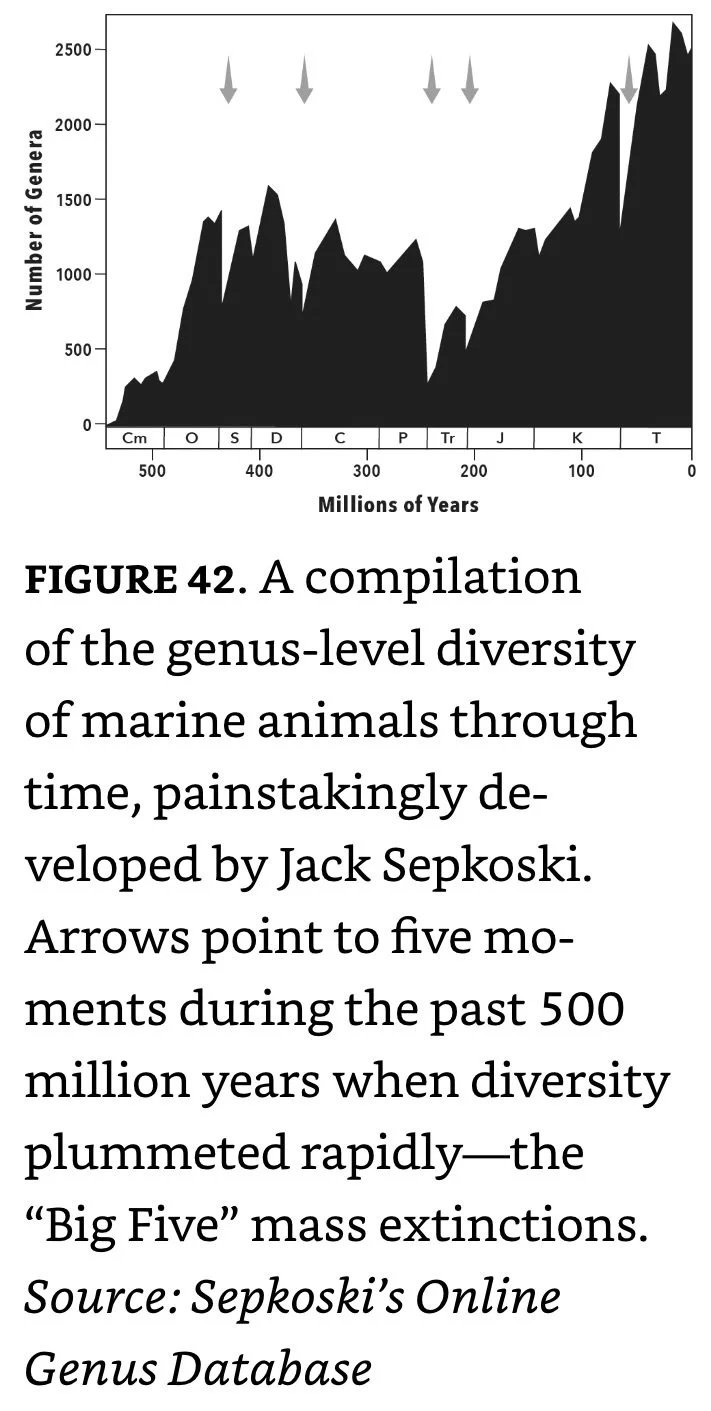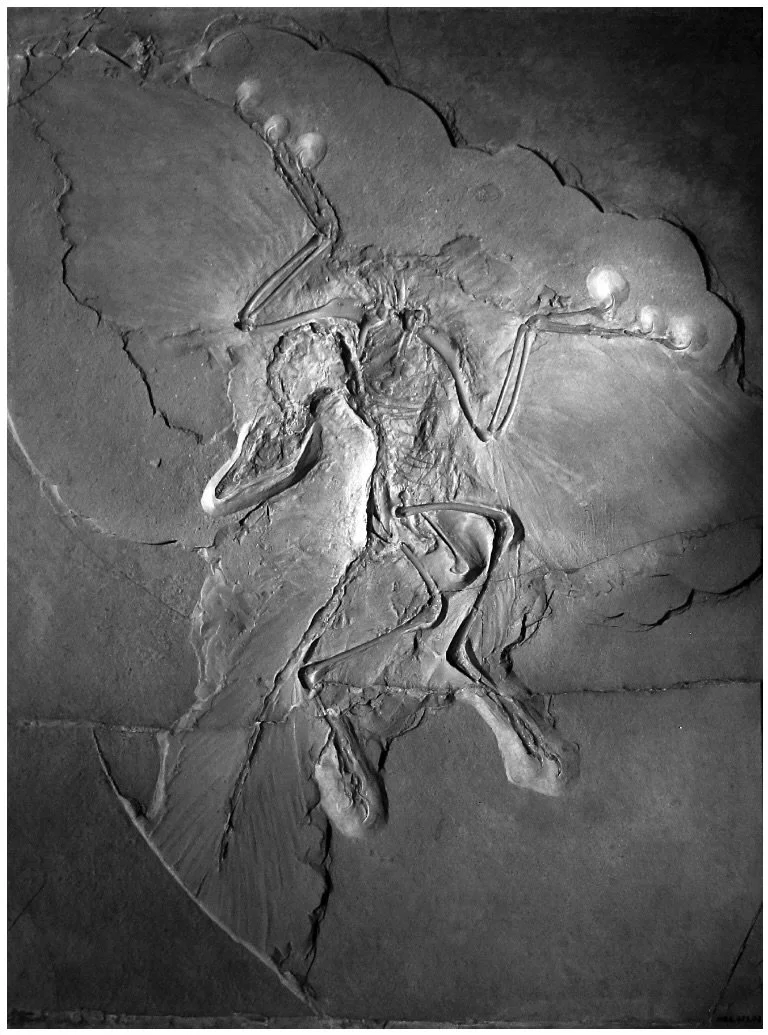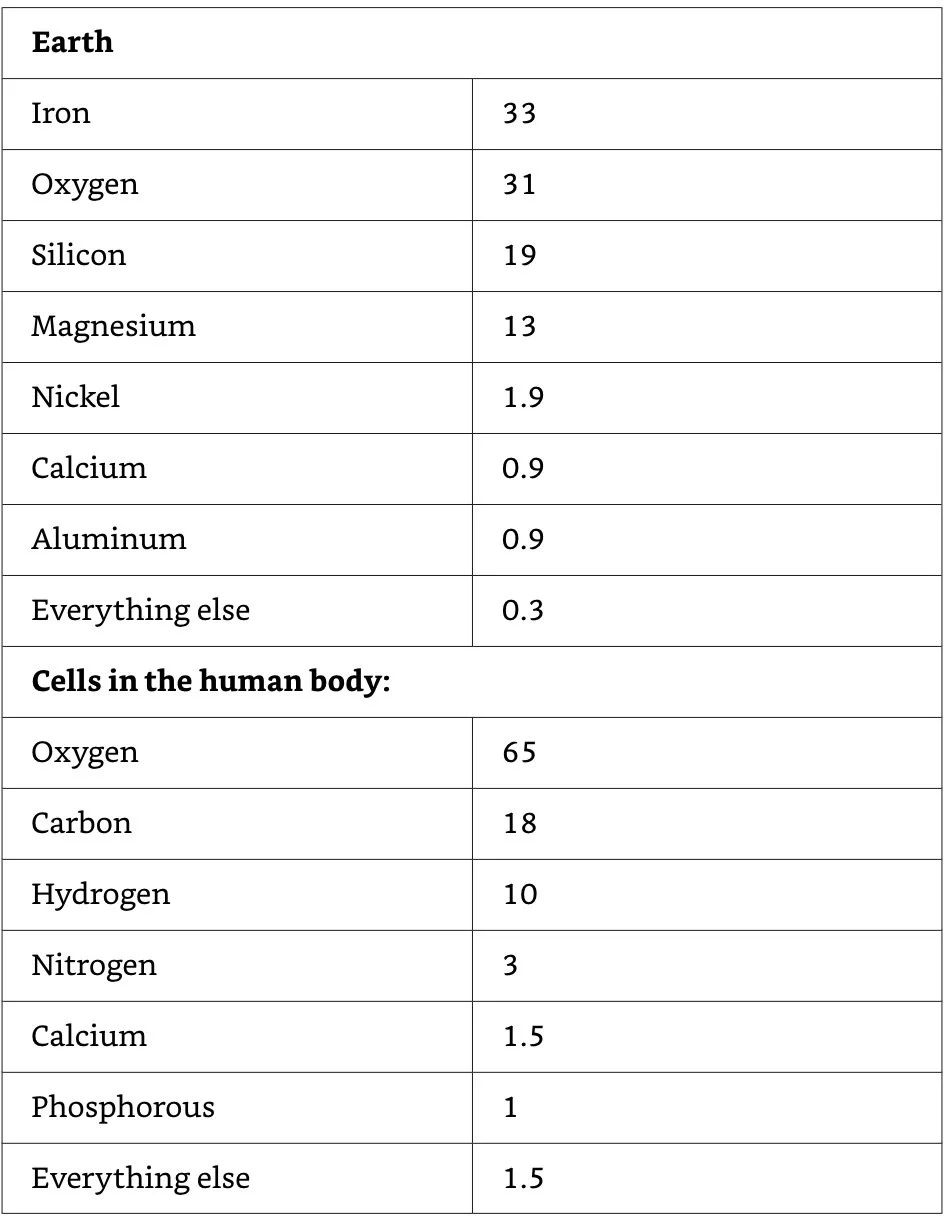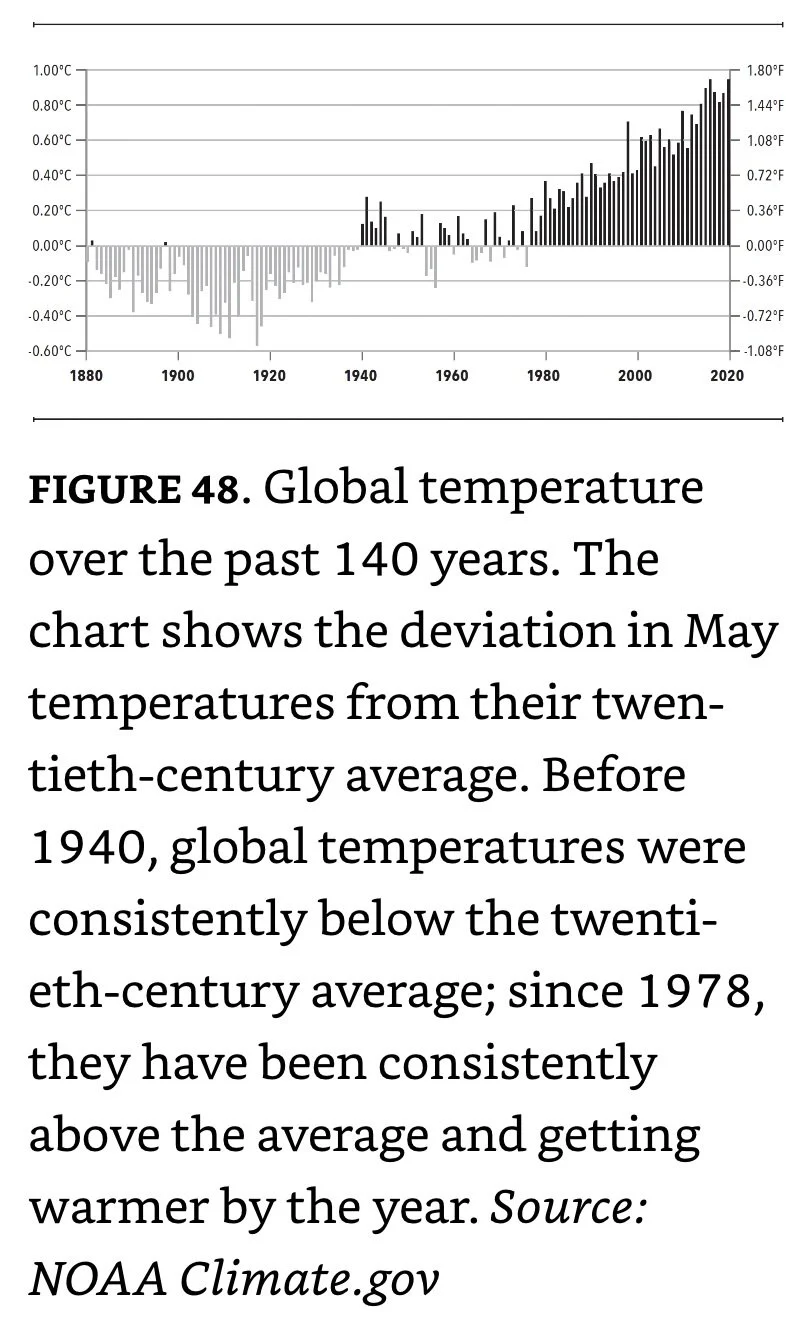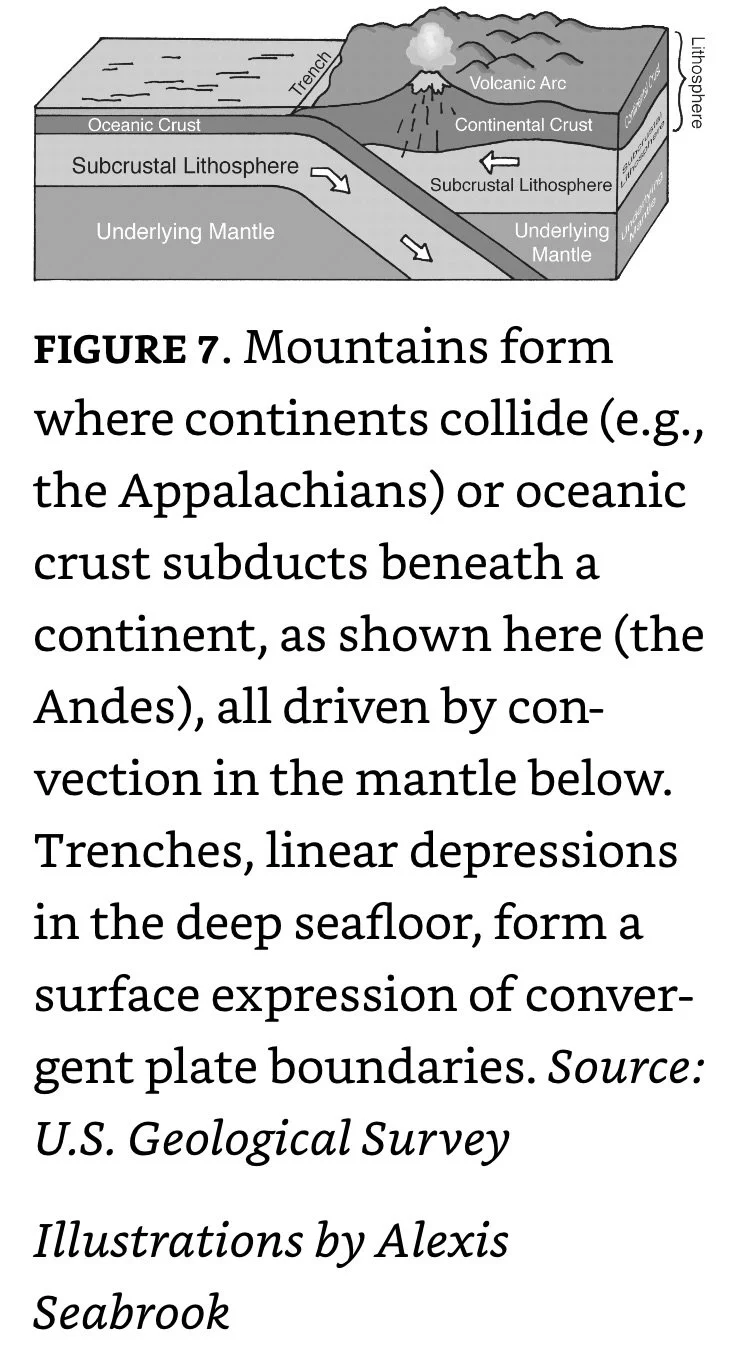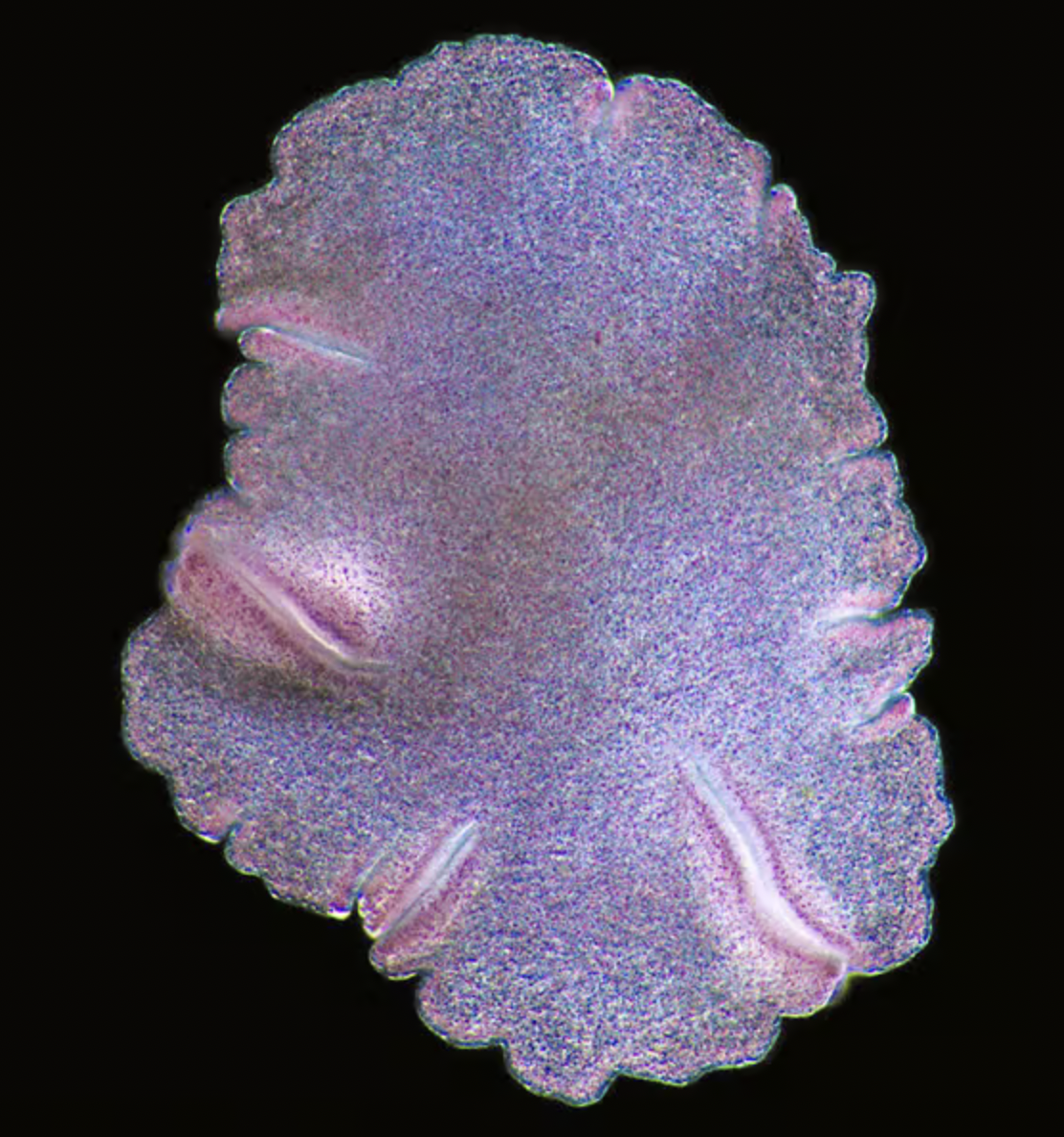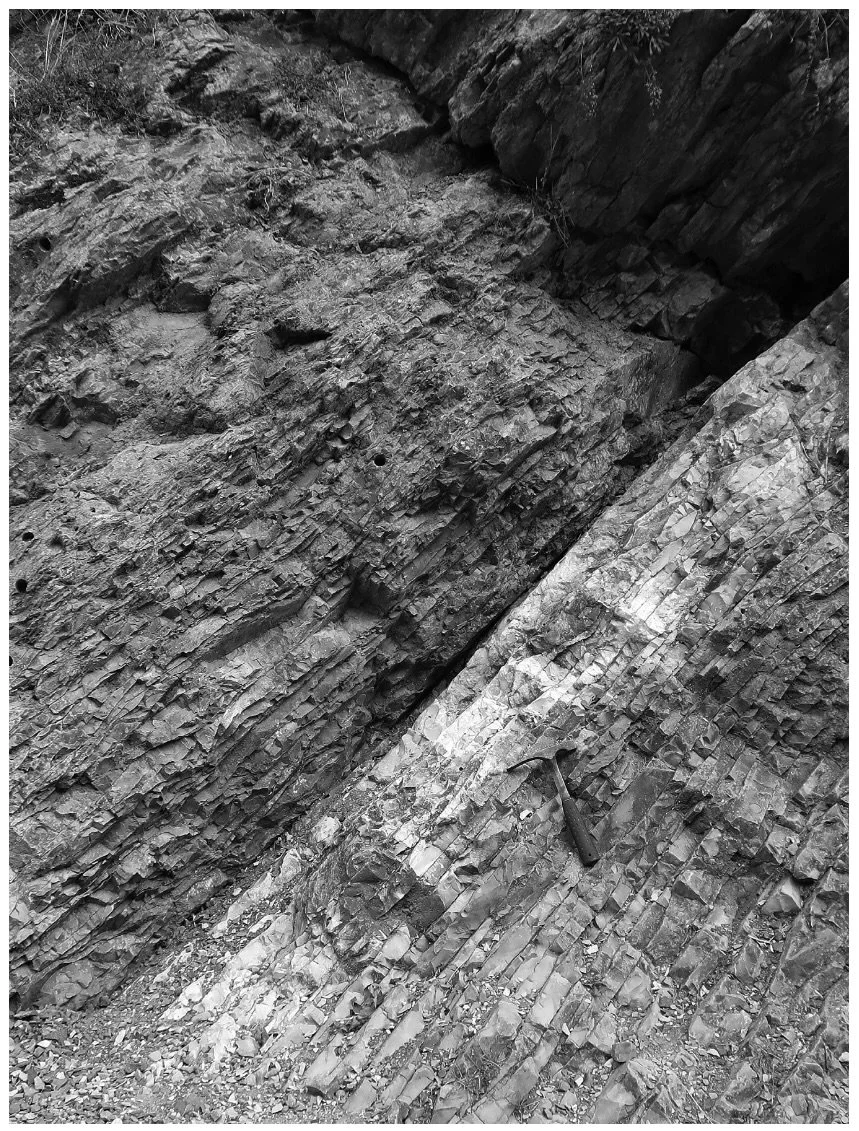A Brief History of Earth by Knoll
Ref: Andrew Knoll (2021). A Brief History of Earth. Custom House.
___________________________________________________________________________
Summary
A scientific history of Earth.
___________________________________________________________________________
Major Events
13.8 Ga: The Big Bang.
4.6 Ga: Formation of the solar system.
4.54 Ga: Earth accretes from rocky debris.
4 Ga: Dating of Earth’s oldest rocks
~3.9 Ga: Late Heavy Bombardment
~3.8-3.6 Ga: Subduction on Earth initiates
3.45 Ga: Dating of the oldest stromatolites.
~3 Ga: Plate Tectonics begins
2.4 Ga: Great Oxygenation Event (GOE).
~1.8-1.6 Ga: Earliest dating of Eukaryotic cells
635-541 Ma: Earth’s Ediacaran period
445 Ma: Ordovician Mass Extinction
393-359 Ma: Late Devonian Extinction
300 Ma: Formation of the Pangaean supercontinent.
251.9 Ma: End Permian Mass Extinction.
201 Ma: End Triassic Mass Extinction.
180 Ma: All the continents of the S. Hemisphere are united as Gondwana,
175 Ma: The Pangaean supercontinent begins to break up
140 Ma: Evolution of Angiosperms (flowering plants).
1.9 Ma-250 Ka: Life of Homo erectus.
300 Ka: Dating of the oldest fossils of modern humans from a cave in Morocco.
70-50 Ka: Modern humans spready rapidly throughout Europe and Asia.
11 Ka: Agriculture is first developed in the fertile crescent.
___________________________________________________________________________
1 Chemical Earth; Making a Planet
The Big Bang (~13.8 Ga): A primordial kernel of universe begins to expand rapidly. At the dawn of the universe, matter consisted of quarks, leptons, and gluons. These would eventually coalesce into H atoms, Deuterium and He.
As atoms formed within the early, expanding universe, gravity began to pull them together. Local aggregations grew, strengthening their gravitational pull, and eventually they collapsed into hot, dense balls, so hot and so dense that H nuclei fused to form He, releasing light and heat. When that happens, a star is born. At the high temperatures and pressures within large stars, light elements fuse to form C, O, Si, and Ca; Fe, Au, U, and other heavy elements are forged in the giant stellar explosions called supernovae.
Two properties of light help us to understand how the universe has evolved. First, the intensity of different wavelengths in incoming radiation points to the composition of its source. Our eyes can detect only a narrow range of wavelengths, but stars and other heavenly bodies emit or absorb a broad spectrum of radiation, from radio- and microwaves to x-rays and gamma rays, each with a story to tell. And, importantly, light obeys a strict speed limit: 299,792,458 m/s (186,282 miles/s) in space.
Formation of the solar system (4.6 Ga): A cloud of H atoms, along with small amounts of gas, ice, and mineral grains within the spiraling arm of the Milky Way begin to coalesce. Probably nudged by a nearby supernova (the cloud was large, diffuse, and cold with temperatures of 10–20 K), this cloud began to collapse into a much smaller, denser, and hotter nebula. Gravity eventually drew most of the cloud into a hot, dense, central mass- our Sun. Most of the nebula’s H went into the Sun, but ice and mineral grains were partitioned into a disk that rotated around it, broadly reminiscent of the rings of tiny particles that encircle Saturn today. At first, this disk was hot enough to vaporize the minerals and ices from which it formed. Over a few million years, however, it began to cool, faster in its outer reaches and slower close to the Sun’s heat.
Formation of Earth (4.54 Ga): Earth coalesces into a planet. For a few million years after the Earth formed, the hot mantle generated molten materials that rose to the surface and spread out across the planet, forming what planetary scientists call a magma ocean. As heat wicked away to the atmosphere, the magma ocean soon cooled to form a primordial crust of broadly basaltic composition. And as this crust thickened and began to melt from its base, silica-rich rocks broadly similar to granite began to form- the first continental crust. Earth’s birth- accretion, global melting and differentiation that shaped our planet’s interior, the formation of oceans and atmosphere—played out on a timescale of 100 My or less. By 4.4 Ga, Earth had become a rocky planet bathed by water beneath a veneer of air. Continents had started to form, but were small and may have been mostly inundated by the sea.
During Earth’s formation and it’s ensuing Hadean era (4.54-4 Ga), heavier elements, especially Fe, sank to the center, while minerals of Mg-SiO2 and other combinations of Fe, Al, Ca, Na, K, and SiO2 formed an outer layer.
Earth’s Layers
Core: Consists primarily of Fe, along with Ni and ~10% H, O, S, and N.
Inner Core: A solid Fe-Ni ball with a radius of 1226 km.
Outer Core: A molten Fe-Ni layer with a radius of 2260 km that slowly moves by convention, as dense material near the base heats up and begins to rise, eventually to cool and sink back towards the base. The motion of the outer core generates an electrical dynamo, resulting in Earth’s magnetic field, which protects our atmosphere from being stripped by solar wind (an energetic stream of charged particles emanating from the sun).
Mantle: Consists of silicate (SiO2) rich minerals (crystalline quartz) joined by Mg and lesser amounts of Fe, Ca, and Al.
Continents: Comprised of crust containing quartz (SiO2) and feldspar minerals rich in Na or K. Thicker and less dense than oceanic crust, causing it to “float” above the ocean crust.
Oceans: Comprised of basaltic rocks that contain Ca- or Na- rich feldspar minerals, but no quartz.
Earth’s Water
The distinct chemistry of comets suggest that they can account for no more than 10% of Earth’s water.
Carbonaceous chondrites (‘Chondritic meteorites’) contain 3-11% water by mass, mostly bound chemically into clays and other minerals, as well as about 2% organic matter (molecules in which C and H are bound together), including amino acids like those found in proteins. It looks like chondritic meteorites of different kinds provided most of the rock, water, and air that we call home.
___________________________________________________________________________
2 Physical Earth; Shaping the Planet
Some geologists hypothesize that as Earth’s magma ocean cooled, the primordial crust cracked; magma that ascended through the fissures from the mantle below pushed the crust on either side apart, initiating the lateral movements characteristic of plate tectonics. As the crust expanded, subduction necessarily followed, and the melting of descending slabs resulted in Earth’s first granite-like crust.
It is the sinking of crustal slabs that pulls the ocean crust apart; new crust then forms passively at the ridges.
We have evidence that five supercontinents assembled over the last 2.5 billion years.
Granite reflects the subduction and partial melting of seafloor basalts.
___________________________________________________________________________
3 Biological Earth; Life Spreads Across the Planet
Life is characterized by growth and reproduction, metabolism, and evolution.
Proteins: The structural and functional workhorses of cells. The proteins in our bodies form by stitching together ~20 different types of amino acids.
Nucleotides: Form the alphabet in which DNA’s information is encoded. Nucleotides can be broken down into even simpler components: a sugar, a phosphate ion (PO43-), and a simple organic molecule called a base.
Bases can be synthesized from HCN and other simple compounds likely to have been present when the Earth was young. Sugars can be generated from simple precursors like formaldehyde (CH2O), also thought to have been present on the ancient Earth. And phosphate ions would have been supplied by the chemical weathering of volcanic rocks.
Lipids: Long, chain-like molecules called fatty acids that bound all cells.
If you splash or evaporate water that contains dispersed fatty acids, they spontaneously come together to form spheroidal microstructures that have a lot in common with the membranes that bound bacteria.
Peptides: Short linear molecules derived from a combination of amino acids.
DNA: Provides the molecular instructions for protein synthesis.
RNA: Stores information like DNA; some RNAs act like enzymes.
RNA World Hypothesis: An early RNA (or RNA-like) molecule tucked inside a spontaneously formed lipid sphere could grow, reproduce, and gradually evolve greater molecular complexity and specificity. In time, DNA would evolve from RNA precursors, providing a far more stable storehouse for the cell’s information, but relinquishing other functional roles. And as amino acids interacted with RNA and DNA, proteins, which generally act much faster than RNA enzymes, would evolve to take on most of the cell’s structural and functional requirements.
To date, the oldest DNA reliably extracted from bones or shells is <2 My old.
Models for stellar evolution suggest that 4 Ga, the Sun’s luminosity was only about 70% of its modern value.
Earth’s early atmosphere appears to have consisted mostly of N gas and CO2, with H2O vapor and variable admixtures of H gas.
___________________________________________________________________________
4 Oxygen Earth; the Origin of Breathable Air
Fe formations do not occur on the modern seafloor. To generate these deposits, Fe must be transported through the ocean in solution, and this is only possible when O2 is absent…Fe formation, then, is a signature of oceans that were largely O-free. And since surface seawater readily exchanges gases with the atmosphere, O-free oceans probably sat beneath O-poor air…Fe formations are distributed widely in sedimentary basins older than about 2.4 By, but fall off markedly after that time, suggesting that this was when O2 began to permeate the atmosphere and surface ocean.
Respiration: Energy gained through ingestion of organic molecules as food that reacts with O (CH2O + O2 → CO2 + H2O).
Photosynthesis: Energy gained by turning CO2 into sugar- requires electrons, which plants and algae extract from water, generating O2 in the process (CO2 + H2O + Sunlight = C6H12O6 + O2).
Today, rates of photosynthesis are generally limited not by sunlight, CO2, or H2O, but rather by the availability of nutrients, especially P, found in DNA, membranes and ATP, the cell’s energy currency, and N, required for both DNA and proteins.
Oxygenic Photosynthesis: The only process capable of oxygenating Earth’s atmosphere. The evolution of Cyanobacteria- the only bacteria capable of oxygenic photosynthesis- led directly to the GOE.
Fermentation: Energy gained by breaking organic molecules into simpler compounds; done by some Bacteria and archaea.
You and I use O2 to respire organic molecules, but some bacteria can respire using other compounds, such as sulfate ions (SO42-) or oxidized iron (Fe3+). Just as animals use O generated by plants to respire organic molecules back to CO2, these bacteria use the molecules produced when photosynthetic bacteria obtain electrons from H-sulfide, dissolved Fe, and more. In this way, the C cycle in sunlit but O-poor environments is linked to the cycles of Fe and S.
Eukaryotes: Organisms whose DNA is compartmentalized within a nucleus. Unlike bacteria, eukaryotes grow large and take many different shapes and can engulf small food particles, including other cells. Through predation, then, eukaryotic cells brought new complexity to ecosystems. Within eukaryotic cells, respiration and photosynthesis are localized within small structures called organelles; mitochondria (of bacterial ancestry) are the seat of respiration, chloroplasts (of cyanobacteria origin) the site of photosynthesis.
Chloroplasts: The sight of photosynthesis; originated as cyanobacteria that were engulfed by protozoans and eventually reduced to metabolic slavery.
It increasingly looks like the eukaryotic cell itself emerged from a long-ago partnership between an archaean cell and a bacterium capable of aerobic respiration.
Most eukaryotes respire using O, and those that don’t are descended from ancestors that did. Nearly all eukaryotes that live where O is absent still require biomolecules that form only where O2 is available; they get what they need by eating food sourced from O-rich habitats. So, in an important way, eukaryotes are daughters of the GOE.
___________________________________________________________________________
5 Animal Earth; Life Gets Big
Heterotrophy: Gaining C and energy by eating organic molecules originally synthesized by other species.
Trichoplax adhaerens: The only formally described species of the obscure phylum Placozoa; cells that line Trichoplax’s surface can engulf food particles, much the way protozoans do, and they also absorb organic molecules from surrounding water or sediments. They get the O they need by diffusion. The last common ancestor of these animals gave rise to two lineages- 1) sponges and 2) pretty much everything else. A second branch point from which placozoans diverge and then another where cnidarians (sea anemones, corals, jellyfish) and bilaterians (insects, snails, us, and everything else with a head and tail, top and bottom, left and right) part ways.
Kimberella: A small fossil first discovered in Australia but best known from more than a thousand specimens, beautifully preserved in White Sea rocks. A few cm long, Kimberella had a distinct front and back, top and bottom, left and right, identifying it as part of the great bilaterian limb on the animal tree. Kimberella moved around on the seafloor, while scratch marks that radiate from its mouth area tell us that these animals had a tough, comb-like organ in their mouths that enabled them to feed by scraping algae and other microorganisms from the seafloor, much like the radula of living snails.
Through most of the Proterozoic Eon, O2 levels in the atmosphere and surface oceans were low, perhaps as little as 1% or so of today’s levels.
___________________________________________________________________________
6 Green Earth
Today, ~400,000 species of land plants account for half of Earth’s photosynthesis and an estimated 80% of our planet’s total biomass.
Land vegetation strongly absorbs incoming visible radiation but reflects IR wavelengths back to space.
Land plants evolved from green algae that lived in fresh water. Cuticle with stomata is a requirement of land plants. As is micro-nutrient absorption, most of which is accomplished through nutrient exchange with fungi (~400 Ma).
Cuticle: (In plants) prevents water vapor in cells from escaping into the atmosphere and keeps CO2 from diffusing into the plant for photosynthesis.
Rhynia: A land plant whose surface has numerous small holes called stomata, flanked by cells that expand to seal the opening when the plant suffers water stress and then contract to reopen the holes when it is safe to do, allowing CO2 into the plant.
Tetrapods: Land vertebrates with four limbs, clearly descended from fish that first diversified as part of the Cambrian explosion in the oceans. Comparative biology and molecular sequence analyses show that tetrapod vertebrates are close relatives of a specific group called the lobe-finned fishes.
Most bony fish, from tuna to trout, have fins supported by long, thin bones that fan out from a set of small bones attached to the body. In contrast, lobe-finned fish have paired fleshy fins attached to the body by a single bone, with other bones forming a structure not unlike the limb bones of tetrapods. Coelacanths are the most celebrated of lobe-finned fishes.
Closer tetrapod relatives are the lungfish, half a dozen species of freshwater fishes that not only have lobed fins but can breathe using primitive lungs related evolutionarily to swim bladders, bulbous organs in fish that are widely used to maintain buoyancy but also supply O to the heart. Although still recognizably fish, lungfish show clear adaptations for life on land.
Tiktaalik: Discovered in circa 375 My old rocks from arctic Canada, Tiktaalik had the overall body organization of a lobe-finned fish, breathing via gills and covered in scales, but it had a flattened skull reminiscent of crocodiles. Its fins were built on the lobe-fin model, but with bone modifications that prompt thoughts of an elbow and wrist. The shoulder girdle was separated from the skull by a neck and appears to have supported muscles required for limb-like locomotion and body support. Features of the skull also suggest that, like living lungfish, Tiktaalik could breathe air by means of lungs.
As an animal grows larger, the heat they generate increases as a function of volume (the cube of length), while body heat is dissipated as a function of surface area (the square of linear dimensions). Thus, at the large sizes attained by dinosaurs, high internal temperatures could be maintained passively.
___________________________________________________________________________
7 Catastrophic Earth
Spurred by focused heat from the mantle, large volumes of lava have erupted across the landscape or seafloor 11x in the past 300 My, providing a mechanism to explain at least one other mass extinction and several smaller events.
The rate of environmental change is as important as its magnitude. When environmental change is slow, populations can adapt to their shifting circumstances, but when it is fast, adaptation may be challenging, leaving migration or extinction as the only available options.
Late Permian Marine Animals: Brachiopods, bryozoans, echinoderms, large skeletonized protists, and more.
Deadly Trio: Global warming, ocean acidification, and oxygen depletion; each factor is capable of harming biota individually. When they all occur together, their effects are synergistic- each factor compounds the others.
___________________________________________________________________________
8 Human Earth
Rising mountains increase weathering rates, pulling CO2 from the atmosphere, while shifting plates reorient seawater circulation in the oceans. In consequence, Earth cools.
6-7 Ma, global cooling began to quicken Earth’s approach to another ice age. In Africa, open woodlands and grassy plains increasingly replaced forests as the continent’s interior dried, and spurred by this shift in habitat, a new lineage of great apes diverged from its closest relatives, today represented by chimpanzees and bonobos. Called hominins, these new apes were broadly chimp-like: small in stature, with a small brain, protruding snout, and long arms with elongate curving fingers to facilitate movement through tree tops.
Our best insights on early hominins come from a single well-preserved skeleton of a young woman discovered in 4.4 My old rock from Ethiopia. Ardipithecus ramidus (Ardi), shows many features likely present in the common ancestor of humans and chimps: she was an adept climber- at home in the trees and foraged in open woodlands for fruit and other food…A bit after Ardi’s time, australopithecines emerged, these apes resembled the earliest hominins…Footprints in Tanzanian show that australopithecines were accomplished walkers, spending much of their day on the ground rather than in trees.
On the basis of fossils, 13 additional species of Homo are recognized (11 named formally); all now extinct.
The oldest fossils assigned to Homo sapiens occur in 300,000-year-old rocks from Morocco.
Modern humans, Neanderthals, and Denisovians are closely related but that deep in the past, individuals from these species occasionally interbred…Early humans lived only in Africa, but a bit more than 100 Ka, one population stuck its toe into the wider world, dwelling in what is now Israel along with Neanderthals. Then, 70-50 Ka, our species spread rapidly throughout Asia and Europe.
For the past million years, Earth has oscillated between glacial cold and interglacial warmth on a 100,000-yr timescale dictated by metronomic variations in Earth’s orbit around the sun.
___________________________________________________________________________
Climate Change
Agriculture now takes up half of Earth’s habitable surface.
Throughout mid-continent N. America, farmers spread liberal amounts of fertilizer across wheat and corn fields. The fertilizer increases crop yield, but most of its nutrients are never taken up by growing plants; instead, rain and groundwater flush them into rivers, eventually to be disgorged into the Gulf of Mexico. In Gulf waters, the fertilizer finally does its job, promoting seasonal blooms of algae. As the algae sink to the seafloor, they are consumed by respiring bacteria, depleting O in ambient waters. In the absence of the O needed for growth and metabolism, animals on or near the seafloor die in large numbers.
~3B people depend on seafood for protein, but 1 in 6 global fisheries has collapsed in recent decades. Another 30% of all commercial fish stocks have been harvested beyond their sustainable limits, and most of the rest have been fished right up to that ecological edge.
Carbon Cycle: Plants and other photosynthetic organisms remove CO2 from air and water, fixing C to form the biomolecules required for growth and reproduction. Animals, fungi, and innumerable microorganisms gain energy by respiring these molecules, returning C to the environment as CO2. Photosynthesis and respiration almost but not quite balance each other, the “not quite” portion being organic matter that escapes respiration and related processes to accumulate in sediments. Some of this buried organic material matures to form petroleum, coal, and natural gas; it will return to the surface carbon cycle only slowly, over millions of years, as plate tectonics lifts the sediments into mountains, exposing them to chemical weathering and erosion…Volcanoes add CO2 to the atmosphere, while chemical weathering removes it, the C eventually depositing as limestone. Together these processes determine the amount of CO2 in the atmosphere. And because CO2 is a strong GHG, they also regulate climate through time.
We know that the observed CO2 increase is driven mainly by the burning of fossil fuels because they impart a chemical signature to the air. Over the past 60 yrs, as some scientists measured the amount of CO2 in the atmosphere, others measured the C-isotopic composition of that CO2. The ratio of C’s two stable isotopes, C-12 and C-13, differs among the major C reservoirs of the Earth, and we can use these differences to pinpoint the source of CO2 added to the atmosphere. CO2 in volcanic gas won’t work, and neither will CO2 dissolved in seawater- their isotopic compositions simply can’t explain the changing isotopic composition of atmospheric CO2. In contrast, organic matter formed via photosynthesis has just the right makeup to explain the data. On the basis of stable isotopes alone, the source of CO2 added to the atmosphere could be forest clearing or fossil fuels, but when we add analyses of C’s third isotope, C-14, the answer becomes clear. Because C-14 is radioactive, decaying to N on a timescale of thousands of years, it is modestly present in living organisms, but undetectable in fossil fuels formed millions of years ago. Measurements show that the proportional amount of C-14 in atmospheric CO2 has declined through time in a way that identifies the principal source of atmospheric CO2 increase as coal, petroleum, and natural gas, burned by humans to provide energy and warmth for a burgeoning population.
The small annual oscillations in global GHG concentrations reflect the fact that there is more land in the N. Hemisphere than below the equator, and so more photosynthesis in the N. summer, drawing down CO2 levels. In the N. winter, photosynthesis slows but respiration keeps its pace, restoring CO2 to the atmosphere.
Due to climate change, decreasing precipitation is forecast for the SW USA, populated areas of the Middle East, SW Africa, the Iberian Peninsula, and more.
During the 20c mean global sea level increased by 15-20 cm, accelerating in recent years. Estimates for 2100 come with many uncertainties, but most predictions call for an additional 50-100 cm.
As seawater pH falls, the ability of corals to secrete their carbonate skeletons decreases.
Estimates suggest that every $1 spent today to modify how we live and work will pay $5 by the end of the century.
___________________________________________________________________________
Misc Quotes
A flight from Boston to London lengthens by ~2.5 cm each yr, as new seafloor pushes N. America and Europe apart.
Together, dark matter and dark energy are thought to make up some 95% of all that exists.
Fool’s gold is extremely sensitive to O2. Left to sit in a wet O-rich environment, it will oxidize to sulfate, the form of sulfur found in gypsum.
Today, the biosphere has 30 tons of bacteria and archaea for every 1 ton of animal.
The man-of-war looks like a jellyfish but in fact is a colony made of numerous individuals, each of which has developed in a way that supports a specific function. The conspicuous float is one individual. Tube-like structures that hang downward from the float are separate individuals dedicated to feeding, reproduction, or defense.
___________________________________________________________________________
Terminology
Black Holes: Regions of space so dense that no light can escape.
Book Lungs: Intricately folded tissues that maximize surface contact with air, allowing O to diffuse from the atmosphere into blood-like fluids that carry O2 throughout the body. Book lungs appear to have been derived from gills in aquatic ancestors.
Carbon Isotopes: ~99% are C-12. ~1% are C-13. 1 in a every trillion is C-14, which spontaneously decays to N-14 with a half-life of 5730 yrs. C isotopes tell tales of ancient biology because when photosynthetic organisms fix CO2 into organic molecules, they preferentially incorporate CO2 containing the lighter isotope, C-12, over its heavier counterpart, C-13. The organisms are not choosing C-12 with intent; it is simply that the lighter CO2 reacts more readily with enzymes in the cell. Thus, when CO2 is abundant, photosynthetic organisms produce organic matter that is slightly enriched in C-12 relative to inorganic C in the environment. The difference is only a few ppt, but it can be measured accurately using mass spectrometers.
Chert (‘Flint’): Exceptionally hard rocks made of fine-grained quartz.
Coral Bleaching: Occurs when water temperatures increase causing corals to expel their algae and turn white.
Diamonds: Form >160 km beneath the surface. These lumps of pure C are transported to the surface by magma.
Gravity: The attraction between different objects, with the strength of the attraction determined by the masses of the objects and the distance between them.
Metabolism: The harvesting of energy and materials by organisms required for growth and reproduction.
Ocean Acidification: A physiologically significant decrease in seawater pH.
Oomycetes: Fungus-like microorganisms best known as the cause of potato blight in 19c Ireland.
Panspermia: The hypothesis that life on the early Earth was seeded, either physically or by aliens, from elsewhere.
Stromatolites: Fossil reefs built upward from the ancient seafloor by communities of microbes that trapped fine-grained sediments and bound them in place. Today, reefs are built mostly by animals, with help from skeleton-forming algae, but reefs accreted long before animals graced the Earth, telling of microbial architects.
Trap: An accumulation of basalt or other dark-colored volcanic rocks, commonly exposed bed after bed in a way that suggests stairs (trappa- Swedish).
___________________________________________________________________________
Chronology
2009: British chemist Sutherland and colleagues generate two types of nucleotides under plausible early Earth conditions (Earth by Knoll).
1992: Grand Banks cod populations are declared commercially extinct forcing a ban on commercial fishing in the region (by 2021, they had not recovered) (Earth by Knoll).
1988: The Gulf of Mexico’s dead zone is first recognized. It covers an area of 39 sqkm. By 2017, it covers 27,730 sqkm (the size of New Jersey) (Earth by Knoll).
1987-2012: The Great Barrier Reef loses ~50% of its live coral cover, mostly due to cyclones and predation by starfish, stimulated by nutrient spikes from agricultural runoff (Earth by Knoll).
1975: Earth’s human population passes 4B (Earth by Knoll).
1962: Princeton geologist Harry Hess hypothesizes “seafloor spreading”; new crust is born at oceanic ridges, which slowly separates the continents on either side. Within a year, Hess’s “seafloor spreading” is confirmed via magnetism by British geologists Frederick Vine and Drummond Matthews (Earth by Knoll).
1957: Oceanographer Roger Revelle spells out clearly how rising levels of CO2 in the atmosphere would change climate and alter ecosystems (Earth by Knoll).
1953: Stanley Miller and Harold Urey fill a glass vessel with CO2, H2O vapor, CH4, and NH3; a mixture of simple molecules they thought were present in Earth’s primordial atmosphere. Miller runs a spark through the vessel to stimulate the effects of lighting on the early Earth and its inner wall began to turn brown. The brown gunk staining the vessel turned out to be organic molecules- including amino acids. In a single landmark experiment, Miller and Urey showed that key building blocks of life could form by natural processes (Earth by Knoll).
1950s: American scientists Bruce Heezen and Marie Tharp discover the mid-Atlantic ridge (Earth by Knoll).
1938: A living coelacanth, thought extinct since the K-T extinction 66 My prior, is caught in the haul of a fisherman working off the coast of South Africa (Earth by Knoll).
1930: Earth’s human population passes 2B (Earth by Knoll).
1915: Alfred Wegener publishes “The Origins of Continents and Oceans”, summarizing his idea of Plate Tectonics (Earth by Knoll).
1908: The Tunguska event; the aerial disintegration of an incoming comet or meteorite levels ~80M trees in a sparsely populated part of Siberia (Earth by Knoll).
1815: The year without a winter; the volcanic eruption of Mount Tambora in Indonesia kills thousands and precipitates a cold summer as far away as New England (Earth by Knoll).
1811: One of the most powerful earthquakes ever recorded strikes Missouri (Earth by Knoll).
1800: Earth’s human population passes 1B (Earth by Knoll).
43 BCE: The volcanic eruption of an Alaskan volcano causes harsh winters and widespread crop failure in Europe, contributing to the demise of the Roman Republic (Earth by Knoll).
6.5 Ka: Agriculture is first developed in parts of sub-Saharan Africa (Earth by Knoll).
7 Ka: Agriculture is first developed in the Andes (Earth by Knoll).
9 Ka: Agriculture is first developed in China (Earth by Knoll).
10 Ka: Agriculture is first developed in Meso-America (Earth by Knoll).
11 Ka: Agriculture is first developed in the fertile crescent that curves northwards from Israel and Jordan to Syria, Turkey, and Iraq. In the Fertile Crescent, humans grew and harvested figs, barley, chickpeas, and lentils. Within a thousand years, sheep, goats, pigs, and cattle had been domesticated (Earth by Knoll).
13-10 Ka: Earth warms rapidly, entering an interglacial from the last ice age (Earth by Knoll).
15 Ka: Earth’s ice age ice begins to melt (Earth by Knoll).
50 Ka: Meteor Crater; a meteor strikes near Flagstaff, AZ creating a 1.2 km across crater (Earth by Knoll).
50-40 Ka: Modern humans arrive in Australia (Earth by Knoll).
70-50 Ka: Modern humans spreads rapidly throughout Asia (alongside Denisovians) and Europe (alongside Neanderthals).
100 Ka: A group of modern humans leave Africa, residing alongside Neanderthals in modern Israel (Earth by Knoll).
300 Ka: Dating of the oldest fossils assigned to Homo sapiens from rocks in Morocco (Earth by Knoll).
1.9 Ma- 250 Ka: Life of Homo erectus; notable for two reasons- 1) its anatomy is intermediate between those of australopithecines and modern humans, with a more human-like skeleton and a brain larger than Lucy’s but smaller than ours, and 2) H. erectus prospered not only in Africa but throughout Eurasia as well (Earth by Knoll).
2 Ma: Dating of the oldest known samples of Earth’s ancient atmosphere in Antarctic ice air bubbles (Earth by Knoll).
3.2 Ma: Life of Lucy, the most famous of all pre-human hominins, in Ethiopia (Earth by Knoll).
7-6 Ma: Earth begins to cool. In Arica, open woodlands and grassy plains increasingly replace forests as the continent’s interior dries (Earth by Knoll).
35 Ma: Glaciers begin spreading across Antarctica (Earth by Knoll).
50 Ma: The Atlantic is small, peninsular India is separated from Asia, lying to the south and surrounded by sea. Australia is just beginning to detach from Antarctica. And, with no ice sheets at the poles, a higher sea level submerges low-lying parts of Eurasia and the E. seaboard of the USA (Earth by Knoll).
~70 Ma: The limey sediments comprising the White Cliffs of Dover accumulate on the seafloor (Earth by Knoll).
94 Ma: Massive volcanism leads to ocean acidification and elevated extinction levels with ~15-20% of all marine genera disappearing (Earth by Knoll).
100 Ma: Orogenesis of the Rocky Mountains; there are no Alps or Himalayas. Much of mid N. America and S. Eurasia are covered by shallow seas. The Atlantic Ocean is reduced to a thin band, Australia docks firmly with Antarctica, and peninsular India increasingly nestles into a geographic nook between Africa and Antarctica (Earth by Knoll).
~140 Ma: Dating of the earliest angiosperm fossils (flowering plants) (Earth by Knoll).
175 Ma: The Pangaean supercontinent begins to break up. The Atlantic Ocean opens in zipper-like fashion, from the equator toward the poles. And as both North and South America moved westward, oceanic crust of the Pacific plate subducted beneath them, giving rise to the Rockies and Andes. The southern continent of Gondwana also broke apart; Africa and India headed north, closing the Tethyan ocean and colliding with the underside of Eurasia to form the great mountains that extend from the Alps to the Himalaya (Earth by Knoll).
180 Ma: All the continents of the S. Hemisphere unite into a single piece, called Gondwana, which is attached at one end to N. America and Eurasia to form a single supercontinent, Pangaea, deeply incised by the now extinct Tethys Ocean (Earth by Knoll).
183 Ma: Massive volcanism leads to ocean acidification and elevated extinction levels with ~15-20% of all marine genera disappearing (Earth by Knoll).
201 Ma: End Triassic Mass Extinction; massive amounts of lava erupt along an arc that extends from the west coast of Scotland and the Palisades of New York to black cliffs in Morocco’s Atlas Mountains and extensive flows now buried by Amazon rain forest. Biological diversity plummets; ~40% of all genera and up to 70% of species disappear from the oceans (Earth by Knoll).
252-201 Ma: Earth’s Triassic period; the earliest known true mammals, turtles, lizards, and frogs, along with pterosaurs (the first winged vertebrates), and Dinosauromorphs (the earliest true dinosaurs and their close relatives) first appear (Earth by Knoll).
252 Ma: End Permian mass extinction; ~7M sqkm (roughly the size of Australia) of basalt with an average thickness of ~2500m erupts in modern Siberia. With a volume of ~4M km3 (a million times greater than any volcanism ever witnessed), CO2 and CH4 concentrations in Earth’s atmosphere and oceans increase severalfold. >90% of marine mammals disappear from ocean acidification (Earth by Knoll).
All Paleozoic corals disappeared—the corals in today’s oceans reflect the later Triassic evolution of skeletons in sea anemones that survived the extinction. Brachiopods, physiological couch potatoes that were among the most widespread and diverse animals on the Permian seafloor, lost nearly all of their diversity. On the other hand, clams and snails survived relatively well. Fish experienced relatively few extinctions, and decapod crustaceans, epitomized today by the shrimps, crabs, and lobsters on our dinner plates, actually diversified from the Permian into the Triassic Period (Earth by Knoll).
300-175 Ma: Pangaea; Earth’s continents are locked as a single large landmass (Earth by Knoll).
383-359 Ma: Late Devonian; vertebrates begin to colonize dry land.
393-359 Ma: Late Devonian Extinction; Brachiopods and other organisms nestled on the seafloor go extinct first, then reef builders, and finally early cephalopods jetting through the water column (Earth by Knoll).
400 Ma: Land plants are living in close association with fungi and exchanging nutrients (Earth by Knoll).
400 Ma: Orogenesis of the White Mountains of New Hampshire and other ranges along the backbone of New England (Earth by Knoll).
407 Ma: Deposition of the Rhynie Chert in and around hot springs (Earth by Knoll).
445 Ma: Ordovician Mass Extinction; diversity collapses as Earth enters a 2 My ice age, centered on the S. Hemisphere. ~50% of all marine animal genera become extinct (Earth by Knoll).
485-444 Ma: Earth’s Ordovician Period; Earth enters a period of global cooling, perhaps driven by rising mountains whose weathering quickens the removal of CO2 from the atmosphere. Ordovician cooling resulted in greater O2 availability for animals in the shallow oceans (Earth by Knoll).
510-505 Ma: Deposition of the Burgess Shale as mud on a deep seafloor, which buries myriad organisms, sealing them from decay by microbes. As a result, we see not only the mineralized skeletons that comprise conventional fossil deposits but unmineralized carapaces, limbs, gills, digestive tracts, and even nerve ganglia (Earth by Knoll).
541-485 Ma: Earth’s Cambrian Period; Earth’s air and ocean O levels are ~50% of modern levels (deep ocean waters remained O- free); abundant animals first appear, dominated by trilobites, extinct arthropods. These segmented multilimbed creatures comprise some 75% of all fossil species discovered in Cambrian rocks (Earth by Knoll).
635-541 Ma: Earth’s Ediacaran period; additional nutrient availability due to mountain building and erosion processes lead to diversification of algae and increased photosynthesis- more food and more O (Earth by Knoll).
~715 Ma- 635 Ma: Snowball Earth; Earth is twice enveloped from pole to equator by glacial ice, possibly onset from a massive outpouring of volcanic rocks across low-latitude continents. These tectonic events may have reduced CO2 to low levels, cooling the planet and initiating glaciation. After millions of years, the ice disappears (Earth by Knoll).
~1.8-1.6 Ga: Earliest dating of Eukaryotic cells in sedimentary rocks from Australia, China, Montana, and Siberia (Earth by Knoll).
2.4 Ga: Great Oxygenation Event (GOE); O2 from oxygenic photosynthesis by cyanobacteria, in which water supplies electrons and O2 is generated as a by-product, begins to permeate Earth’s atmosphere and surface ocean (Earth by Knoll).
2.5 Ga- 541 Ma: Earth’s Proterozoic era (Earth by Knoll).
~3 Ga: Plate Tectonics begins in some reasonably modern manifestation on Earth (Earth by Knoll).
3.45 Ga: Dating of the oldest stromatolites on Earth, from sedimentary rocks in W. Australia (Earth by Knoll).
~3.8-3.6 Ga: Subduction on Earth initiates (Earth by Knoll).
~3.9 Ga: Late Heavy Bombardment, the inner solar system is pummeled by meteorites (Earth by Knoll).
4 Ga: Dating of Earth’s oldest rocks (Earth by Knoll).
4-2.5 Ga: Earth’s Archean era (Earth by Knoll).
4.4 Ga: Earth is a rocky planet bathed by water beneath a veneer of air. Continents begin to form, but are mostly inundated by the sea (Earth by Knoll).
4.54-4 Ga: Earth’s Hadean era (Earth by Knoll).
4.54 Ga: Earth coalesces into a planet. For a few million years after the Earth formed, the hot mantle generated molten materials that rose to the surface and spread out across the planet, forming a “magma ocean.” As heat wicked away to the atmosphere, the magma ocean soon cooled to form a primordial crust of broadly basaltic composition. And as this crust thickened and began to melt from its base, silica-rich rocks broadly similar to granite began to form- the first continental crust. Earth’s birth- accretion from ancient star stuff, global melting and differentiation that shaped our planet’s interior, the formation of oceans and atmosphere- played out on a timescale of 100 My or less (Earth by Knoll).
During Earth’s formation and it’s ensuing Hadean era (4.54-4 Ga), heavier elements, especially Fe, sank to the center, while minerals of Mg-SiO2 and other combinations of Fe, Al, Ca, Na, K, and SiO2 formed an outer layer (Earth by Knoll).
4.6 Ga: Formation of the solar system; a cloud of H atoms, along with small amounts of gas, ice, and mineral grains within the spiraling arm of the Milky Way begin to coalesce. Probably nudged by a nearby supernova (the cloud was large, diffuse, and cold with temperatures of 10–20 K), this cloud began to collapse into a much smaller, denser, and hotter nebula. Gravity eventually drew most of the cloud into a hot, dense, central mass- the Sun. Most of the nebula’s H went into the Sun, but ice and mineral grains were partitioned into a disk that rotated around it, broadly reminiscent of the rings of tiny particles that encircle Saturn today. At first, this disk was hot enough to vaporize the minerals and ices from which it formed. Over a few million years, however, it began to cool, faster in its outer reaches and slower close to the Sun’s heat (Earth by Knoll).
~13.8 Ga: The Big Bang; a primordial kernel of universe consisting of quarks, leptons, and gluons, begins to expand rapidly. These would eventually coalesce into H, Deuterium and He (Earth by Knoll).
___________________________________________________________________________


